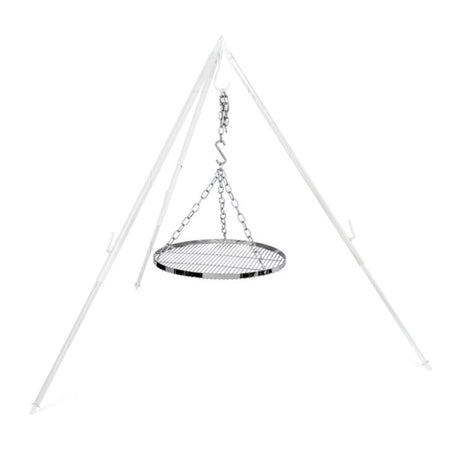Tu te tiens à l'air libre la nuit et tu lèves les yeux au ciel ? Alors tu ne vois pas seulement un magnifique ciel étoilé, mais aussi une aide naturelle à l'orientation ! Depuis des milliers d'années, les hommes utilisent les étoiles pour naviguer - et aujourd'hui encore, cette capacité n'est pas seulement fascinante, mais aussi très utile. Dans ce guide détaillé, nous te montrons comment reconnaître les constellations et les utiliser pour la navigation.
Table des matières
L'histoire de la navigation par les étoiles
Ce que tu dois savoir sur le ciel nocturne
Les principales constellations pour s'orienter
Utilisation pratique de la navigation par les étoiles
Outils pour les observateurs d'étoiles
L'art de l'observation du ciel
Conclusion
L'histoire de la navigation stellaire
L'histoire de la navigation par les étoiles est aussi ancienne que l'humanité elle-même. Les premières civilisations ont reconnu l'importance des étoiles pour la navigation et ont développé des systèmes sophistiqués pour s'orienter dans le ciel nocturne. Les Phéniciens s'en servaient pour traverser les mers, les Polynésiens pour explorer le vaste océan Pacifique et les Bédouins pour parcourir les étendues infinies des déserts.
Les réalisations des navigateurs polynésiens sont particulièrement impressionnantes :
- Ils ont développé la "boussole étoilée" avec 32 points de repère.
- Certaines étoiles servaient de repères pour atteindre les îles connues.
- Les connaissances étaient transmises dans des écoles de navigation spéciales
- La tradition est encore respectée aujourd'hui sur certaines îles.
Ce que tu dois savoir sur le ciel nocturne
À première vue, le ciel étoilé peut sembler être un motif chaotique de points lumineux, mais en réalité, tout suit un système précis. En raison de la rotation de la Terre, les étoiles semblent tourner autour d'un point fixe - le pôle céleste. C'est à proximité de celui-ci que nous trouvons l'étoile polaire, la seule qui semble rester fixe à sa place.
Le mouvement apparent des étoiles
Le mouvement des étoiles dans le ciel nocturne suit un schéma fascinant. Au cours d'une nuit, toutes les étoiles semblent tourner en cercles concentriques autour de l'étoile polaire. Plus une étoile est proche de l'étoile polaire, plus le cercle qu'elle décrit est petit. En revanche, les étoiles proches de l'horizon décrivent des cercles plus grands. Une rotation complète dure environ 23 heures et 56 minutes, une durée que les astronomes appellent un jour sidéral.
Les constellations circumpolaires sont particulièrement intéressantes. Elles ne se couchent jamais sous nos latitudes et peuvent donc être observées toute l'année. Elles comprennent la Grande Ourse, Cassiopée, la Petite Ourse, le Dragon et Céphée. Ces constellations sont particulièrement précieuses pour la navigation, car nous pouvons les utiliser comme points de repère fiables en toute saison.
Les principales constellations pour s'orienter
La Grande Ourse - ton principal repère
La Grande Ourse n'est pas seulement la constellation la plus connue du ciel étoilé nordique, elle est aussi ton principal guide pour t'orienter. Ses sept étoiles brillantes forment l'image caractéristique d'un chariot que même les débutants peuvent facilement reconnaître. Chacune de ces étoiles a son propre nom et sa propre histoire : Dubhe et Merak forment les "pointeurs" vers l'étoile polaire, Phecda et Megrez marquent le centre du chariot, tandis qu'Alioth, Mizar et Alkaid forment le "timon".
L'étoile Mizar est particulièrement intéressante. En regardant de plus près, tu peux voir à côté d'elle une étoile compagnon plus faible - l'Alkor. La capacité de séparer ces deux étoiles à l'œil nu était considérée comme un test de vision dans de nombreuses cultures. Chez les archers arabes, par exemple, il fallait être capable de reconnaître ces deux étoiles pour être admis dans l'armée.
Trouver l'étoile polaire à l'aide de la Grande Ourse est étonnamment simple : cherche d'abord les deux étoiles situées à l'arrière de la caisse du chariot, Dubhe et Merak. Allonge ensuite la ligne entre ces deux étoiles d'environ cinq fois vers le haut. L'étoile la plus brillante dans cette zone est l'étoile polaire. Pour contrôler, tu peux vérifier qu'elle est bien la dernière étoile du "timon" de la Petite Ourse.
Cassiopée - Le "W" dans le ciel
Alors que la Grande Ourse est connue de nombreuses personnes, la non moins importante Cassiopée est souvent ignorée. Pourtant, cette constellation est un guide tout aussi fiable dans le ciel nocturne. Ses cinq étoiles brillantes forment un "W" ou un "M" distinctif, selon la position de la constellation dans le ciel. La position de Cassiopée est particulièrement pratique : elle se trouve du côté opposé à l'étoile polaire, comme la Grande Ourse. Cela signifie que si l'une des deux constellations est cachée par des arbres ou des bâtiments, tu peux utiliser l'autre pour t'orienter.
Les étoiles principales de Cassiopée portent des noms évocateurs comme Shedar, Caph et Gamma Cassiopeiae. Cette dernière est particulièrement intéressante, car elle fait partie des étoiles variables - sa luminosité varie à intervalles irréguliers. Cela en fait un objet d'observation très apprécié des astronomes.
La Petite Ourse et son précieux trésor
La Petite Ourse est peut-être plus difficile à voir que sa grande sœur, mais elle abrite l'étoile la plus importante du ciel boréal : l'étoile polaire. Elle forme l'extrémité du timon de la Petite Ourse et se trouve presque exactement au-dessus du pôle Nord géographique. Sa position dans le ciel te donne même une idée de ta latitude - à Munich, elle se trouve à environ 48 degrés au-dessus de l'horizon, à Hambourg, elle est déjà à 54 degrés.
Il est intéressant de noter que l'étoile polaire n'est pas particulièrement brillante - elle n'est de loin pas l'étoile la plus brillante du ciel nocturne. Son importance tient uniquement à sa position près du pôle nord céleste. Dans environ 14.000 ans, en raison de la précession de l'axe terrestre, l'étoile brillante Vega prendra le relais.
Orion - Le maître du ciel d'hiver
Lorsque les jours raccourcissent et que les nuits s'allongent, la majestueuse Orion fait son entrée sur la scène céleste. Cette impressionnante constellation domine le ciel d'hiver et est facilement reconnaissable, même pour les débutants. Ses caractéristiques les plus marquantes sont les trois remarquables étoiles de la ceinture, qui apparaissent comme alignées sur un fil.
Orion est un véritable écrin pour les observateurs du ciel. Ses étoiles d'épaule sont la rougeâtre Bételgeuse et la bleutée Bellatrix - deux étoiles qui ne pourraient pas être plus différentes. Bételgeuse est une supergéante vieillissante qui finira sa vie dans une énorme supernova, tandis que Bellatrix est une étoile relativement jeune et chaude. Les étoiles de pied Rigel et Saiph complètent la forme distinctive du "chasseur céleste".
La nébuleuse d'Orion, qui apparaît comme une tache délavée en dessous des étoiles de la ceinture, est particulièrement fascinante. Avec des jumelles, tu peux déjà distinguer nettement plus de détails de ce gigantesque lieu de naissance des étoiles. De nouvelles étoiles et de nouveaux systèmes planétaires sont en train de se former ici - un spectacle cosmique qui se poursuit depuis des millions d'années.
Application pratique de la navigation par les étoiles
L'orientation à l'aide des étoiles n'est pas un exercice théorique - elle peut être extrêmement utile dans de nombreuses situations. La clé d'une navigation stellaire réussie réside dans la recherche de l'étoile polaire, qui nous indique de manière fiable la direction du nord. Mais comment déterminer avec précision notre position et notre direction ?
Les bases de l'orientation
L'étoile polaire ne nous indique pas seulement le nord géographique - sa position dans le ciel nous en dit aussi long sur notre propre localisation. Sa hauteur au-dessus de l'horizon correspond en effet assez précisément à la latitude à laquelle nous nous trouvons. À Munich, il se situe à environ 48 degrés, à Hambourg à 54 degrés et au pôle Nord, il se trouverait juste au-dessus de notre tête.
Pour déterminer le nord avec précision, le mieux est de viser l'étoile polaire et de laisser tomber un fil à plomb - par exemple une ficelle avec un poids. Le point où le fil à plomb touche le sol se trouve exactement dans la direction du nord. À partir de là, il est facile de déterminer tous les autres points cardinaux : Le sud se trouve exactement en face, l'est à droite et l'ouest à gauche.
Trouver l'étoile polaire
Voici comment trouver ton principal point de repère dans le ciel nocturne :
- Cherche les deux étoiles les plus éloignées de la Grande Ourse (Dubhe et Merak).
- Allonge la ligne entre ces étoiles d'environ cinq fois vers le haut.
- L'étoile la plus brillante dans cette zone est l'étoile polaire.
- Pour vérification, il s'agit de la dernière étoile du "timon" de la Petite Ourse.
Autres méthodes de navigation
Mais que faire si l'étoile polaire n'est pas visible ? Heureusement, il existe plusieurs alternatives. Orion, par exemple, peut servir de guide fiable. Ses trois étoiles de ceinture forment une ligne droite qui, prolongée vers la gauche (est), mène à l'étoile la plus brillante du ciel nocturne - Sirius dans le Grand Chien. Une ligne perpendiculaire vers le haut mène ensuite approximativement à l'étoile polaire.

Outils pour les observateurs d'étoiles
Il est certes possible d'apprendre l'art de la navigation stellaire sans aucun outil, mais certains outils sélectionnés peuvent considérablement faciliter l'initiation. Le plus important d'entre eux est certainement la carte stellaire rotative. C'est en quelque sorte un ordinateur analogique qui te montre le ciel étoilé visible à tout moment. Contrairement aux appareils électroniques, il fonctionne de manière fiable, même par temps froid et humide, et ne nécessite pas de piles.
L'utilisation d'une carte céleste peut sembler un peu inhabituelle au début, mais elle s'apprend rapidement. Il suffit de régler la date et l'heure actuelles pour que la carte t'indique quelles constellations sont actuellement visibles. Particulièrement pratique : si tu tiens la carte au-dessus de ta tête et que tu l'orientes selon les points cardinaux, la représentation correspond exactement à ce que tu vois dans le ciel.
Les aides numériques
De nos jours, nous disposons bien sûr aussi de nombreux outils numériques. Des applications d'astronomie comme Stellarium ou Sky Map transforment ton smartphone en un guide personnel des étoiles. Il te suffit de pointer ton téléphone vers le ciel et l'application t'indique quelles constellations et quels objets célestes s'y trouvent. Cela peut être très utile, notamment pour les débutants, afin de découvrir les premières constellations.
Toutefois, ces applis ont aussi leurs inconvénients. L'écran lumineux du smartphone perturbe l'adaptation naturelle de tes yeux à l'obscurité, et la précision des capteurs intégrés laisse parfois à désirer. Considère donc ces applis pour ce qu'elles sont : Un outil d'apprentissage, pas un substitut à de véritables connaissances astronomiques.
Les jumelles sous-estimées
Pour beaucoup de gens, l'astronomie évoque immédiatement les grands télescopes. Pourtant, pour débuter, une bonne paire de jumelles est souvent un meilleur choix. Elles sont faciles à transporter, rapidement prêtes à l'emploi et présentent un champ de vision naturel et droit. Avec des jumelles 7x50 ou 10x50, tu peux déjà faire des observations fantastiques : Les cratères de la Lune, les lunes de Jupiter, les amas d'étoiles et même certaines galaxies sont visibles avec elles.
Les jumelles sont particulièrement adaptées à l'observation de la Voie lactée. Le large champ de vision te montre notre galaxie d'origine telle qu'elle est réellement : une immense bande de millions d'étoiles, traversée par des nuages de poussière sombres. Dans un endroit sombre, ce spectacle est tout simplement époustouflant.
Pour des observations réussies, nous recommandons un équipement de base :
- Une carte stellaire tournante comme compagnon fiable
- Une bonne paire de jumelles (idéalement 7x50 ou 10x50)
- Une lampe à lumière rouge de faible intensité pour la lecture des cartes
- Des vêtements chauds, même en été
L'art de l'observation du ciel
L'observation réussie du ciel étoilé commence bien avant le regard vers le haut proprement dit. Le choix de l'emplacement adéquat est à cet égard décisif. Cherche un endroit aussi sombre que possible, loin de toute source de lumière gênante. Même à quelques kilomètres de la ville, la différence peut être énorme. Un horizon dégagé est également un avantage pour que tu puisses voir le plus de ciel possible.
L'adaptation de tes yeux à l'obscurité joue un rôle important. Il faut environ 30 minutes pour que tes yeux s'habituent complètement à l'obscurité. Pendant ce temps, tu devrais éviter tout éclairage - même le fait de vérifier brièvement ton smartphone peut réduire à néant l'adaptation à l'obscurité. Si tu as besoin de lumière, par exemple pour lire une carte des étoiles, utilise une lumière rouge. Elle perturbe nettement moins l'adaptation à l'obscurité que la lumière blanche.
La bonne technique d'observation
C'est en vision périphérique que l'être humain perçoit le mieux les sources lumineuses faibles. Utilise cette caractéristique de tes yeux en regardant légèrement devant toi lorsque tu observes des objets faibles. Cette technique de "vision indirecte" peut faire la différence entre "ne rien voir" et un objet clairement visible.
Laisse ton regard se balader dans le ciel au lieu de fixer un point. Tu découvriras ainsi plus facilement des motifs et des relations. Fais régulièrement des pauses et détends tes yeux. Et pense à t'habiller suffisamment, même par nuit chaude - on se refroidit plus vite qu'on ne le pense en observant tranquillement.

Conclusion : le ciel comme guide éternel
L'orientation à l'aide des étoiles est l'une des plus anciennes techniques culturelles de l'humanité. Même à l'ère du GPS et des smartphones, elle n'a rien perdu de sa fascination. Au contraire : c'est justement aujourd'hui, alors que nous comptons tant sur les aides électroniques, que la connaissance de la navigation naturelle peut être une réassurance précieuse.
Mais l'étude du ciel étoilé offre bien plus encore. Elle nous apprend la patience et l'observation précise. Elle nous montre notre place dans l'univers et nous relie aux innombrables générations d'hommes qui ont levé les yeux vers les mêmes étoiles avant nous. Enfin, elle nous offre quelques-unes des plus belles expériences de la nature que l'on puisse avoir.
La prochaine soirée claire ne manquera pas d'arriver - profite de l'occasion pour trouver ton propre chemin vers les étoiles. Avec un peu de pratique, tu reconnaîtras bientôt les principales constellations comme de vieux amis. Et qui sait ? Peut-être qu'un jour ton chemin te mènera vraiment là où tu as besoin des étoiles pour naviguer. Tu seras alors parfaitement préparé.
Conseil : commence ton exploration du ciel nocturne par les constellations les plus visibles comme la Grande Ourse ou Orion. De là, tu pourras progresser pas à pas vers les formations stellaires moins visibles. Et n'oublie pas : même les astronomes les plus expérimentés n'ont jamais fini d'apprendre - le ciel réserve toujours de nouvelles surprises !
Tu veux vivre encore plus d'aventures en plein air ? Découvre nos autres contributions pour des idées créatives afin de profiter encore plus de ton temps dans la nature !
Randonnées en famille : La randonnée avec les enfants devient une aventure
Randonnée durable : 7 conseils pour les vrais amoureux de la nature
Observer les animaux dans les forêts allemandes : Le guide des explorateurs de la nature
Signalisation pour les sentiers de randonnée : explication et signification





































